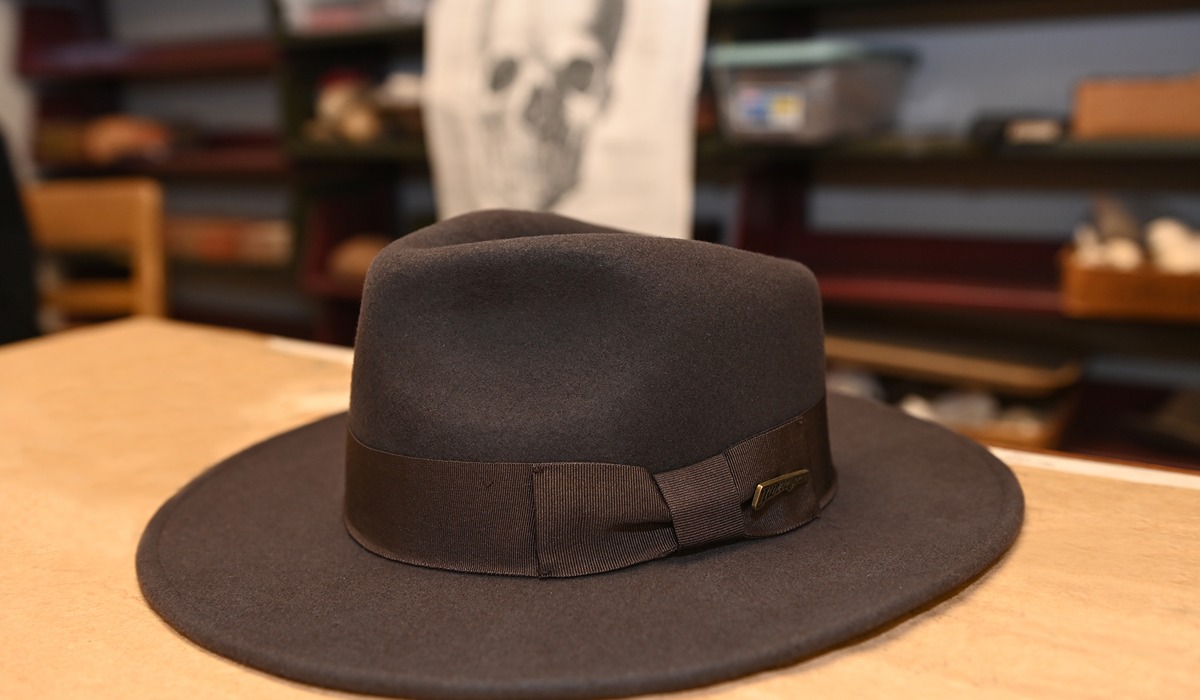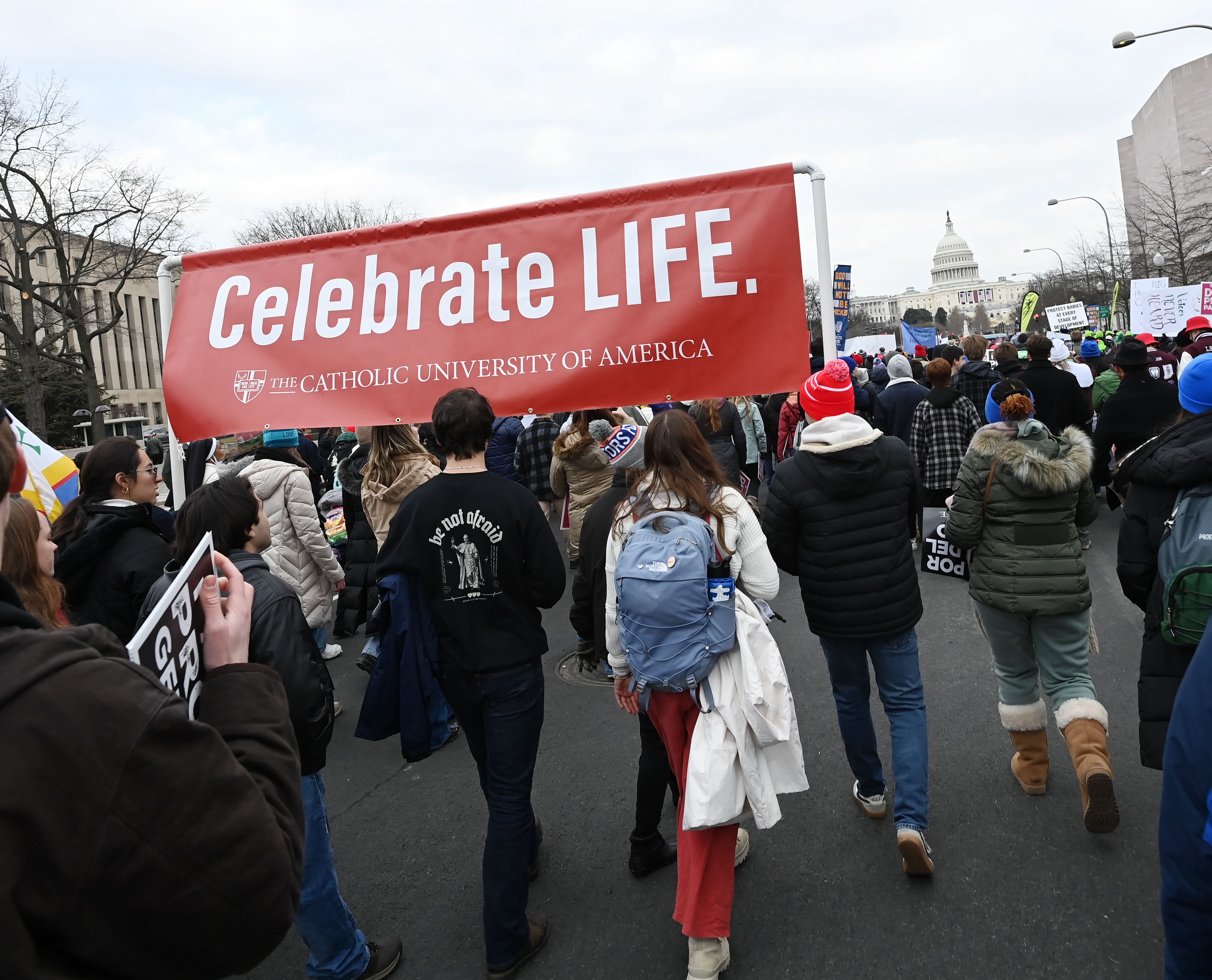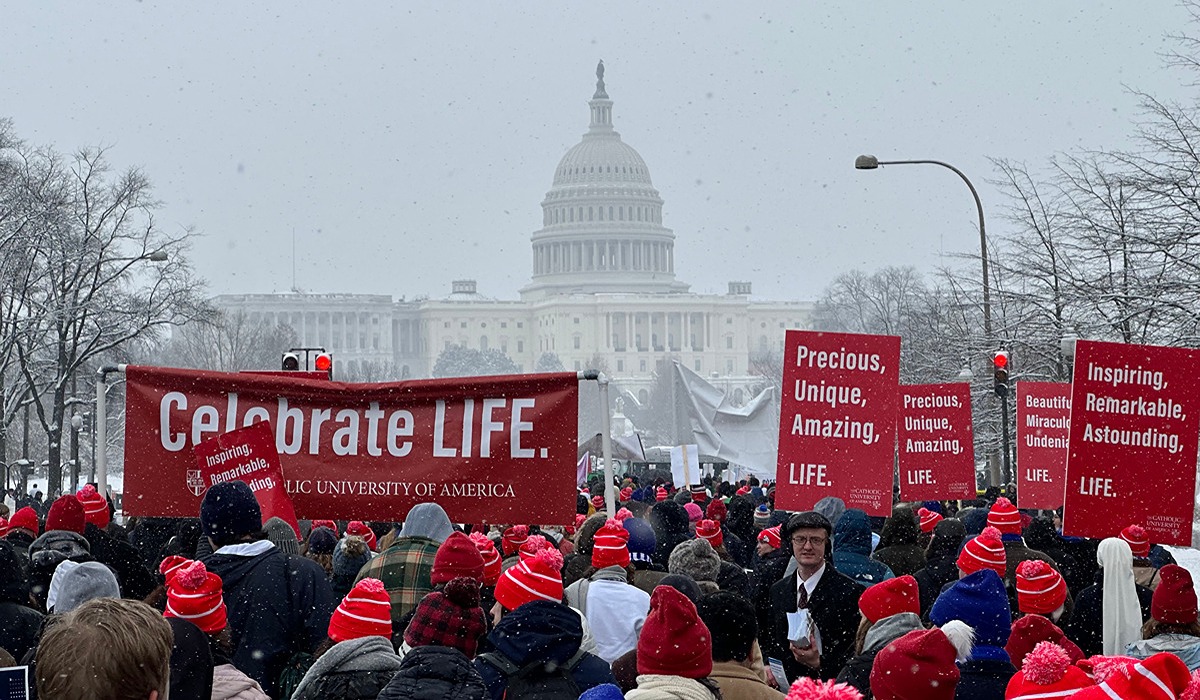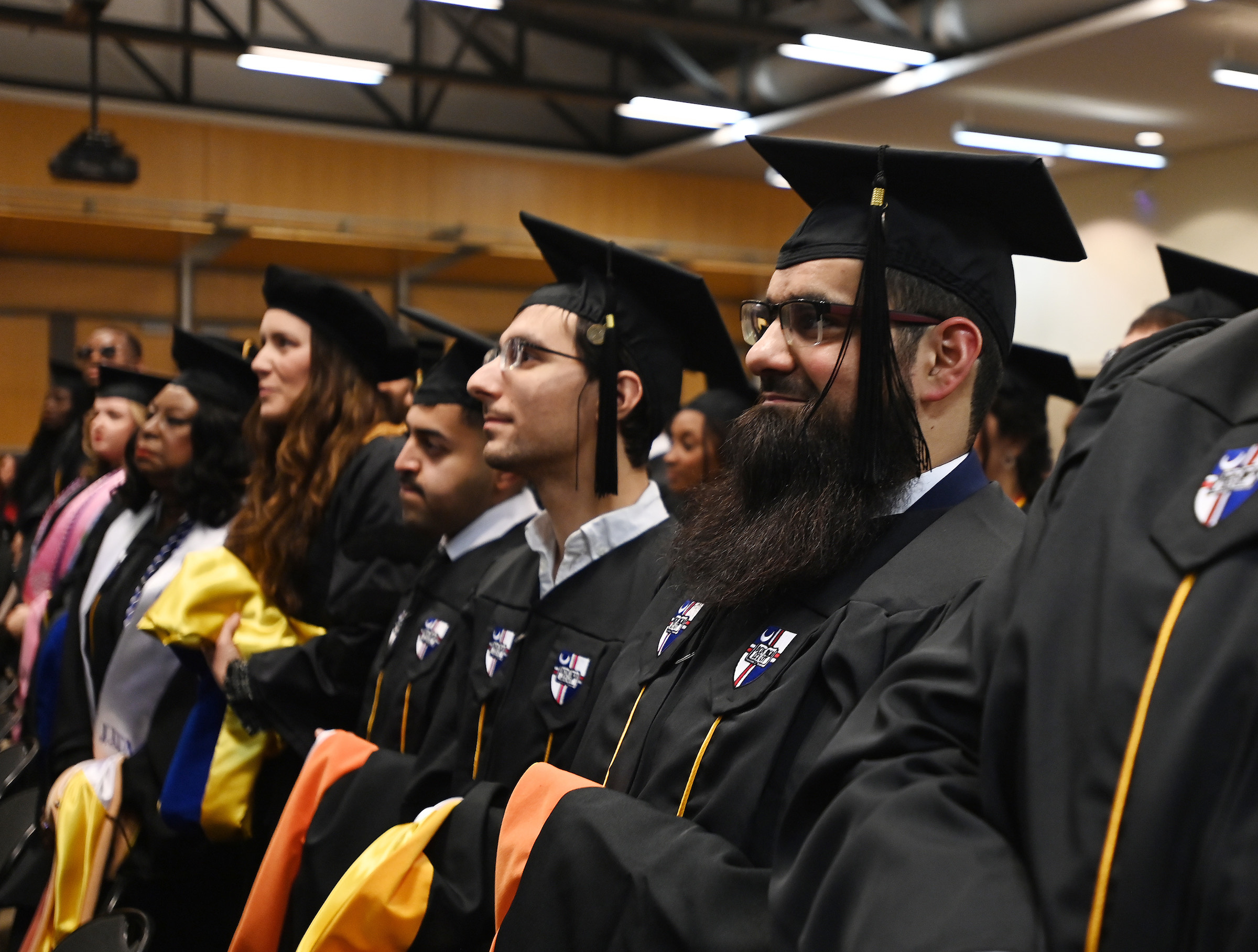When Indiana Jones and the Dial of Destiny arrives in movie theaters June 30, much of the narrative around it will be that the fictional archaeologist— and star Harrison Ford — will hang up the fedora, jacket, and whip and cease his globe-trotting adventures.
The Catholic University of America archaeology graduates will be eagerly putting on a copycat hat for the first time following the University’s Commencement ceremonies May 13. The newest archaeology major alumni will gather for a ceremony and reception inside Hannan Hall for an annual tradition in which Clinical Associate Professor and Chair Joshua Samuels and Assistant Professor Laura Masur award fedoras just like the famed treasure hunter.
“Gifting an Indiana Jones fedora to our graduating seniors is the highlight of my year,” Samuels said.
The 15-year-old tradition previously occurred when anthropology majors successfully completed their comprehensive exams in the fall of their last year. Several years ago it became a post-Commencement rite.
Masur teaches Introduction to Archaeology each semester and starts with a clip from Indiana Jones films to lay out the realities of the profession versus the blockbuster image. That context can be necessary for some students. The last franchise installment — Indiana Jones and the Kingdom of the Crystal Skull — arrived in theaters in 2007, when this year’s graduates were likely in kindergarten or first grade. Is receiving a fedora on the level of, say, Captain America’s shield or Thor’s Mjolnir hammer?
“At least 50% of the students have seen Indiana Jones and they still know it,” Masur said.
Generation X-member Samuels said, “I think anyone who grew up in the 80s was a fan of Indiana Jones. I didn’t become an archaeologist because of the movies, but they certainly planted a seed. It’s not until you get older that you start seeing the franchise, and Indiana Jones himself, with a more critical lens.
“Nowadays I appreciate him for the visibility he lends to our field — How many other academic specialties have their own superhero? — but also for the many teachable moments about heritage ethics that his problematic adventures showcase.”
Samuels and Masur both emphasized that there’s a drastic difference between how the Indiana Jones character approaches archaeology and how those who toil in the profession do. The titular character of the movie series often had murky reasons and end results for his quests.
“What we teach about archaeology is methodologically rigorous, but also ethically rigorous,” Masur said.
Added Samuels, “At CUA, the anthropology faculty teaches our students how to advance dialogue and mutual respect to build bridges between communities. For archaeologists, this means understanding how knowledge of the past gets used in the present for recreational, economic, and political purposes, and how this impacts different stakeholder communities.
“Graduates from our archaeology program therefore get extensive practical training in field and lab methods, but also in consultation and community engagement to prepare them for successful careers in cultural resource management and related fields.”
Masur said that four Catholic University students have already declared an archaeology minor for next year with the hope of more to come. She and Samuels are preparing for a potential bump in enrollment post-Dial of Destiny.
“We’ve gotten a lot of interest from potential students,” she said. “We want a public that appreciates archaeology for what it is.”



